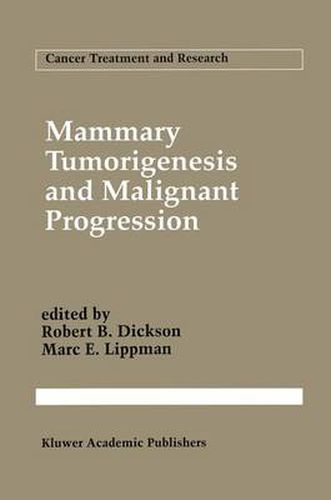Readings Newsletter
Become a Readings Member to make your shopping experience even easier.
Sign in or sign up for free!
You’re not far away from qualifying for FREE standard shipping within Australia
You’ve qualified for FREE standard shipping within Australia
The cart is loading…






This title is printed to order. This book may have been self-published. If so, we cannot guarantee the quality of the content. In the main most books will have gone through the editing process however some may not. We therefore suggest that you be aware of this before ordering this book. If in doubt check either the author or publisher’s details as we are unable to accept any returns unless they are faulty. Please contact us if you have any questions.
The current volume represents the fourth over a period of five years in our series on Advances in the Cellular and Molecular Biology of Breast Cancer. The first three volumes were entitled Breast Cancer: Cellular and Molecular Biology, Regulatory Mechanisms in Breast Cancer, and Genes, Oncogenes, and Hormones, respectively. Throughout this series, we have tried to take a broad look at cutting-edge topics in basic science research into breast cancer. This attempt has resulted in a wide range of subject material, including rodent and human model systems, oncogenes, suppressor genes, growth factors, hormones, tumor-host interactions, and determinants of metastases. Since our last volume, research in breast cancer has continued to proceed at an explosive rate. We hope the current volume will provide the reader with some of the excitement felt by the editors and authors as we begin to understand this all-too-common disease. The first section of this book is devoted to the basic processes of proli feration, differentiation, and malignant progression of breast cancer. T.l. Anderson and W.R. Miller lead off with a detailed description of controls on proliferation in the normal human breast and in breast cancer. This chapter strongly emphasizes pathological aspects. The second chapter, by M.R. Stampfer and P. Yaswen, presents a corresponding viewpoint through a presentation of experiments with human mammary epithelial cells in culture. The second section of the book emphasizes the genetic basis for breast cancer onset and malignant progression. Chapter 3, by M.-C. King and S.
$9.00 standard shipping within Australia
FREE standard shipping within Australia for orders over $100.00
Express & International shipping calculated at checkout
This title is printed to order. This book may have been self-published. If so, we cannot guarantee the quality of the content. In the main most books will have gone through the editing process however some may not. We therefore suggest that you be aware of this before ordering this book. If in doubt check either the author or publisher’s details as we are unable to accept any returns unless they are faulty. Please contact us if you have any questions.
The current volume represents the fourth over a period of five years in our series on Advances in the Cellular and Molecular Biology of Breast Cancer. The first three volumes were entitled Breast Cancer: Cellular and Molecular Biology, Regulatory Mechanisms in Breast Cancer, and Genes, Oncogenes, and Hormones, respectively. Throughout this series, we have tried to take a broad look at cutting-edge topics in basic science research into breast cancer. This attempt has resulted in a wide range of subject material, including rodent and human model systems, oncogenes, suppressor genes, growth factors, hormones, tumor-host interactions, and determinants of metastases. Since our last volume, research in breast cancer has continued to proceed at an explosive rate. We hope the current volume will provide the reader with some of the excitement felt by the editors and authors as we begin to understand this all-too-common disease. The first section of this book is devoted to the basic processes of proli feration, differentiation, and malignant progression of breast cancer. T.l. Anderson and W.R. Miller lead off with a detailed description of controls on proliferation in the normal human breast and in breast cancer. This chapter strongly emphasizes pathological aspects. The second chapter, by M.R. Stampfer and P. Yaswen, presents a corresponding viewpoint through a presentation of experiments with human mammary epithelial cells in culture. The second section of the book emphasizes the genetic basis for breast cancer onset and malignant progression. Chapter 3, by M.-C. King and S.